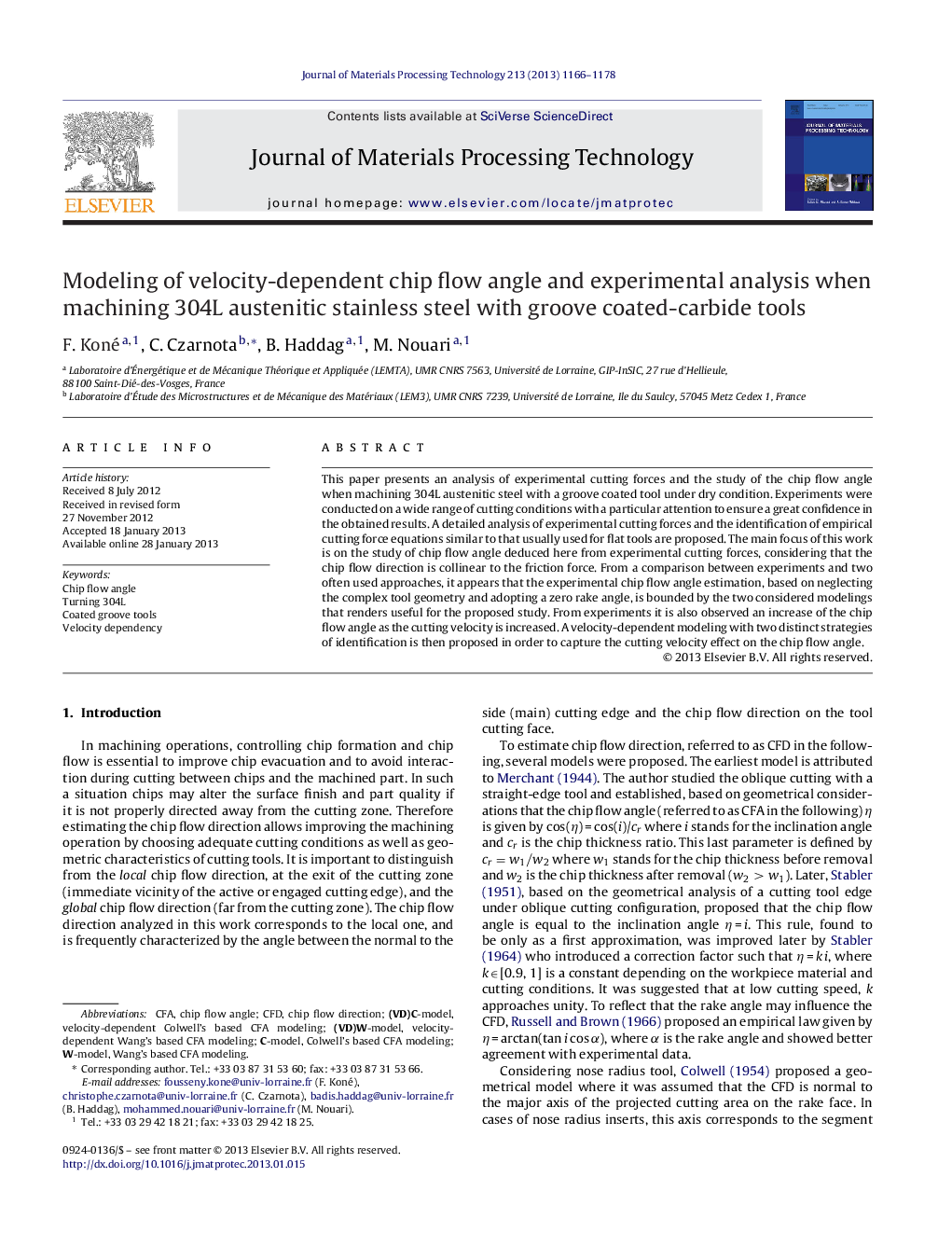| Article ID | Journal | Published Year | Pages | File Type |
|---|---|---|---|---|
| 795885 | Journal of Materials Processing Technology | 2013 | 13 Pages |
This paper presents an analysis of experimental cutting forces and the study of the chip flow angle when machining 304L austenitic steel with a groove coated tool under dry condition. Experiments were conducted on a wide range of cutting conditions with a particular attention to ensure a great confidence in the obtained results. A detailed analysis of experimental cutting forces and the identification of empirical cutting force equations similar to that usually used for flat tools are proposed. The main focus of this work is on the study of chip flow angle deduced here from experimental cutting forces, considering that the chip flow direction is collinear to the friction force. From a comparison between experiments and two often used approaches, it appears that the experimental chip flow angle estimation, based on neglecting the complex tool geometry and adopting a zero rake angle, is bounded by the two considered modelings that renders useful for the proposed study. From experiments it is also observed an increase of the chip flow angle as the cutting velocity is increased. A velocity-dependent modeling with two distinct strategies of identification is then proposed in order to capture the cutting velocity effect on the chip flow angle.
► It presents a large experimental set of cutting forces obtained when machining AISI 304L with a three layers coated groove tool. ► The applicability of two chip flow angle modelings is discussed in details. ► An improvement of these models is proposed in order to capture the effect of the cutting velocity and to propose a new CFA modeling.
